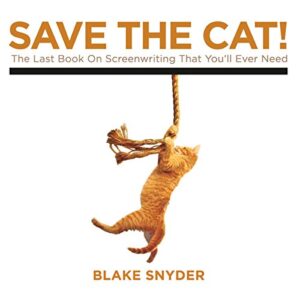
A risk-averse teacher plans on marrying his dream girl but must first accompany his overprotective future brother-in-law – a cop – on a ride along from hell! – Ride Along (Interestingly, this movie finally got made even though “Save The Cat” was written in 2005 when it mentions this movie was just bought.).A just-hired employee goes on a company weekend and soon discovers someone’s trying to kill him.A newly married couple must spend Christmas Day at each of their four divorced parent’s homes.


A businessman falls in love with a hooker he hires to be his date for the weekend.to visit his estranged wife and her office building is taken over by terrorists. Other movies are easy to figure out since they have a great logline or one-line-a one or two sentence description of the movie-that shows the movie is full of potential based on the premise, the characters, and the conflict. This largely explains why Hollywood makes so many sequels and perpetually remakes classics: there is already a fan-base so selling it to the public is a lot easier. This might be because they are “pre-sold franchises,” which are movies like “Superman,” “Shrek,” “Ocean’s Eleven” that most people know the general plot and characters. It is asked by the marketing team as they try to summarize the movie on the movie poster. It is asked by movie executives during the pitch meeting. It is asked by the audience before they plop down their $10 to see a movie. What a film is about is a key question asked during many stages of pitching, production, and distribution of a movie. Worth the read, but definitely not the “last book on screenwriting you’ll ever need.” The principles in the book could have saved many current Hollywood releases, although some of the great movies out there don’t adhere 100% to Snyder’s formula.)Įnjoy the book! And leave a comment below to let us know your take on Snyder’s advice!Ĭhapter 1 | Chapter 2 | Chapter 3 | Chapter 4


(Mini-review, for those who demand it: Very useful primer for beginner screenwriters, and a good resource for veteren writers. There are eight chapters, so I’m breaking these “Cliffs Notes” into eight posts. This will accomplish two things: it will give screenwriters who haven’t read this book an idea of the gems within, and it will create a handy summary/reminder for those who have read it and are referring back. Instead of writing a review of “Save The Cat! The Last Book on Screenwriting You’ll Ever Need” by Blake Snyder –something that many, MANY other readers have done– I instead decided it would be much more beneficial to create “Cliffs Notes” of the book. “Save The Cat!” Screenwriting Book: Chapter One Summary


 0 kommentar(er)
0 kommentar(er)
